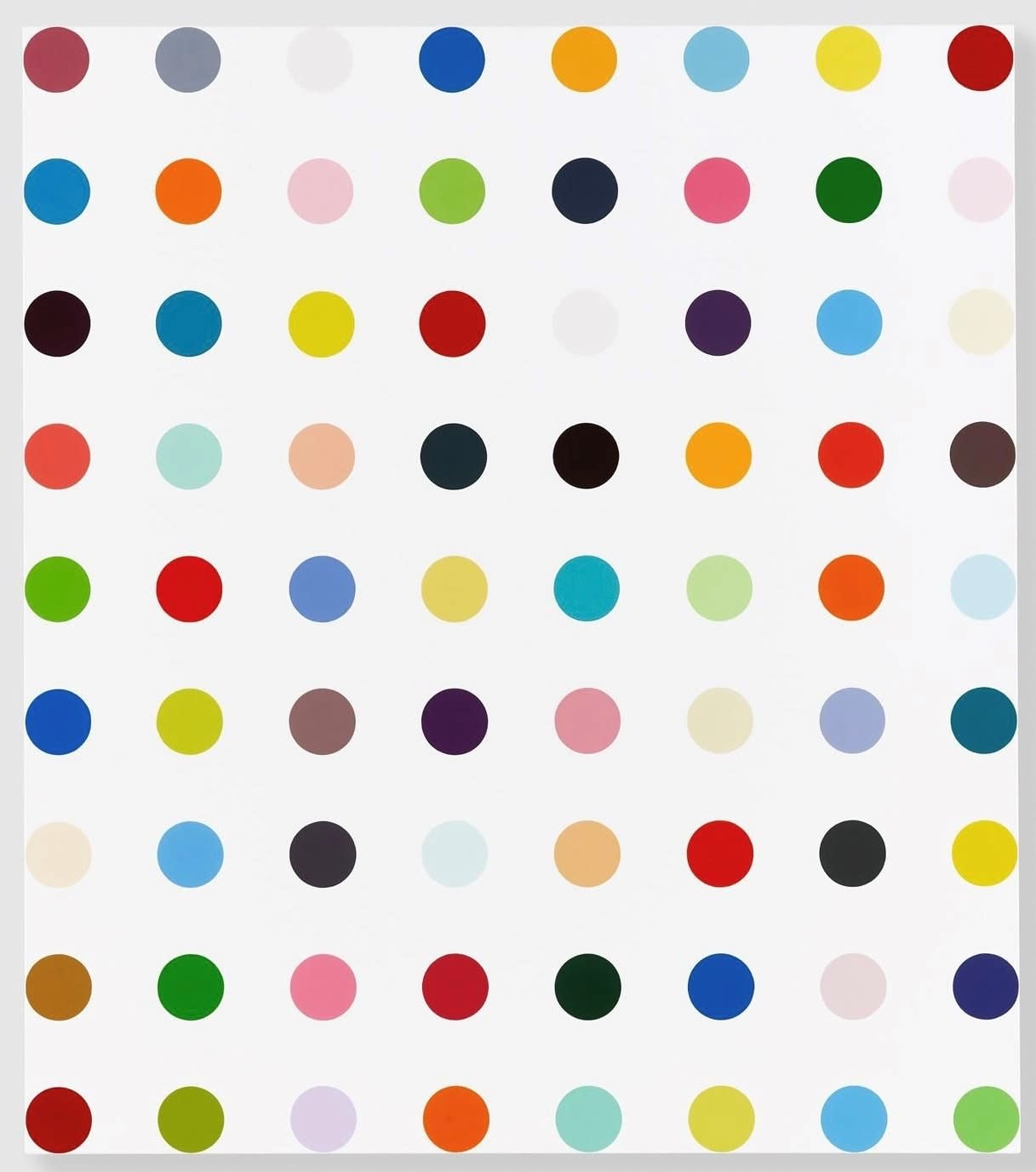Damien Hirst
b. 1965, Bristol
Hygromycin B
2004–11
Household gloss on canvas
172.7 x 152.4 cm (68 x 60 in.)
Provenance
Private collection, Rome.
Description
'To create that structure, to do those colours, and do nothing. I suddenly got what I wanted. It was just a way of pinning down the joy of colour.'—Damien Hirst
The spot paintings are among Hirst’s most widely recognised works. There are estimated to be around 1500 in existence, created between 1986 and the present. Of the thirteen subseries within the spots category, the ‘Pharmaceutical’ paintings are the first and most prolific, reflecting a recurring theme within the artist's oeuvre: drugs.
The genesis of the spot paintings is linked to the seminal exhibition of Young British Artists, Freeze, organised by Hirst in 1988. During the third and final stage of the exhibition, Hirst painted two near-identical arrangements of coloured spots onto the wall of the warehouse, giving them the titles Edge (1988) and Row (1988). These paintings were preceded by some loose hand-painted spots on board, dating from 1986, and the first spot work on canvas, Untitled (with Black Dot) (1988), the only ‘Pharmaceutical’ painting ever to have incorporated a black dot.
Following Freeze, Hirst started to refine his creative process. Slowly, he began to employ assistants to create the spot paintings, a result of which the production of these works accelerated throughout the 1990s. Any physical evidence of human intervention – such as the compass point left at the centre of each spot – was removed, until the works appeared to have been constructed mechanically, or 'by a person trying to paint like a machine'. This structured fabrication of art echoed the mass-produced explorations of Andy Warhol, and of later artists such as Jeff Koons. For Hirst, it was a departure from years of experimenting with paint and collage, and the first result of his search for a contemporary art form that could succeed without a reliance on 'already organised elements.'
In 2012 Gagosian Gallery exhibited over 300 spot paintings across eleven gallery spaces worldwide. Conceived of as a single exhibition, The Complete Spot Paintings 1986-2011, fulfilled Hirst’s longstanding ambition to show the works together. He explained in 2000 of the idea of an installation of multiple spot paintings: 'it’s an assault on your senses. They grab hold of you and give you a good shaking. As adults, we’re not used to it. It’s an amazing fact that all objects leap beyond their own dimension.'
The present work is a prime example of Hirst's spot paintings, with perfectly spherical dots, each painted with a unique colour. The enduring allure of the spot paintings attests to the expansive possibilities of variation in form, composition, and colour that the humble shape of a filled circle can offer.





